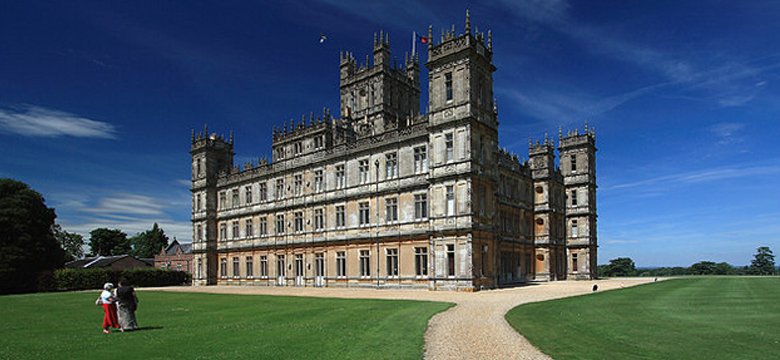The popularity of “Downton Abbey,” the brain child of creator/writer Julian Fellowes and ITV, is something of a cultural phenomenon. While the show is universally adored, the fever pitch that fandom reaches on our side of the pond is somewhat surprising, considering the longevity of shows like Friends and Seinfeld. By way of contrast, the appeal of “Downton Abbey” is one of opposites attract, as the average Yank has little in common with the fictitious Crawley family and their (mostly) loyal retainers. Spanning decades of war, society intrigue, the looming threat of financial ruin, and the occasional dead body, “Downton Abbey” is anything but a show about nothing. Julian Fellowes (actually, Baron Fellowes) has written a period drama that lifts the veil on the lifestyle of the British aristocracy.
However witty the writing, I would suggest the American obsession for “Downton Abbey” has less to do with the Noël Cowardesque dialogue or the interwoven Upstairs Downstairs storylines. We have, after all, seen that before. The fascination lies in Fellowes’ structure, which binds the drama to a particular place.
Highclere Castle, the Hampshire stand-in for the titular “Downton Abbey,” provides much more than a picturesque filming location. The vast, sumptuous estate lends verisimilitude that no amount of clever writing or set production could achieve. As Fellowes observes, “nothing is more depressing (or less convincing)…than the attempt to claim some rank or position…without the requisite acquaintance and props.”[ii] To believe anything the characters say, the audience must be convinced that this place could not be anything but a noble Englishman’s estate.
No longer military strongholds, such castles were refashioned with a single aim: to impress. And Highclere Castle accomplishes this objective inside and out. In fact, many of the lavish furnishings seen onscreen actually belong to the Carnarvon estate. From the gleaming silver to the glinting chandeliers, these fixtures make “Downton” convincing because they are the authentic trappings of an English aristocrat, where all furnishings would be carefully selected to denote the wealth and rank of the family and their place in society. As the Dowager Countess affirms, “Nothing succeeds like excess.”
It is tempting to bask in anglophile nostalgia and long for the bygone decadence of “Downton.” But speaking as an American, I’m fairly certain we wouldn’t want to live there. Even those happy few who’ve managed to preserve their estates struggle to supplement the cost of its maintenance.
Moreover, if we Americans were at “Downton,” it would not be as a family member or even a guest (unless we happened to be an heiress of the Consuelo Vanderbilt variety). Our place would be below stairs as a member of staff, for “the English, of all classes as it happens, are addicted to exclusivity. Leave three Englishmen in a room and they will invent a rule that prevents a fourth from joining them.”[iii] Happily, we were not born into, nor can living memory recall, a fixed class system of pointers and schleppers. Should the fancy take us, we can, like the Dowager Countess, sit in a chaise lounge. Unlike her, we can do so whilst enjoying central heating.
By Holly Culbreath
[i] Snobs, p 42.
[ii] Snobs, p 93.
[iii] Snobs, p 19.
